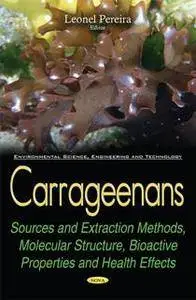Carrageenans : Sources and Extraction Methods,
Molecular Structure, Bioactive Properties and Health Effects
by Leonel Pereira
English | 2016 | ISBN: 1634855035 | 305 Pages | PDF | 8.41 MB
Molecular Structure, Bioactive Properties and Health Effects
by Leonel Pereira
English | 2016 | ISBN: 1634855035 | 305 Pages | PDF | 8.41 MB
Industrialized countries are currently increasing efforts regarding the manufacturing of high-value products derived from algae, since these contain chemical components (e.g., polysaccharides, proteins, lipids and polyphenols) with a wide range of biological activities. Algal polysaccharides (phycocolloids), such as agar, alginates and carrageenans are produced in a large scale and have a wide range of applications in the food, pharmaceutical and cosmetic industries. Phycocolloids are very important in terms of their industrial commercialization. In fact, they had an estimated global value of approximately $US 1 billion in 2009 and represented more than half of the non-food macroalgae market products. European output of phycocolloids is estimated to have an annual wholesale value of around €130 million which is 97.5% of the total for all algal products in Europe. This huge production stems from the growing worldwide demand for phycocolloids, particularly for agar and carrageenan. A significant percentage of produced phycocolloids are used in the food industry. Phycocolloids' popularity also arises from their low cost in production and nontoxic nature. For this reason, this book will be focused on these seaweed-derived hydrocolloids, with special attention to carrageenan, its extraction, characterization, and applications.



